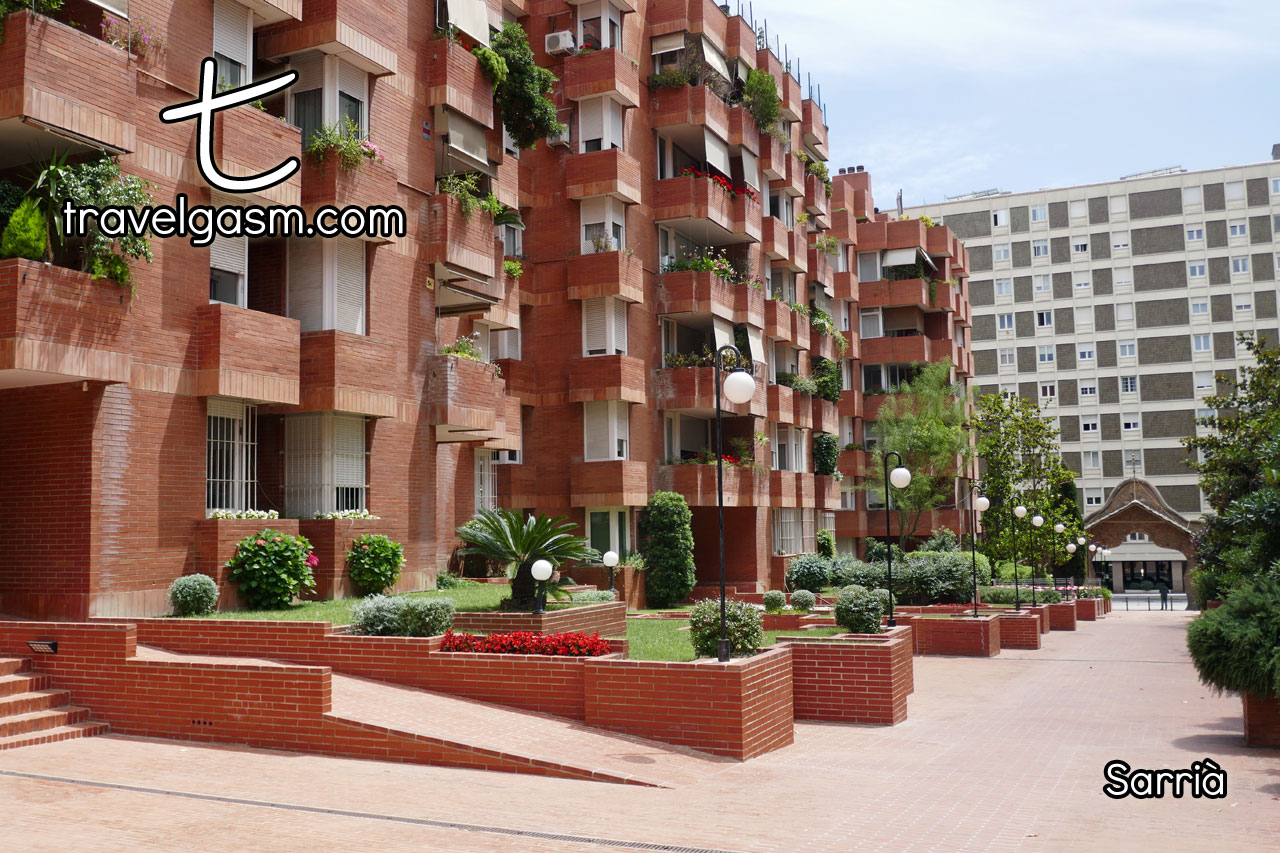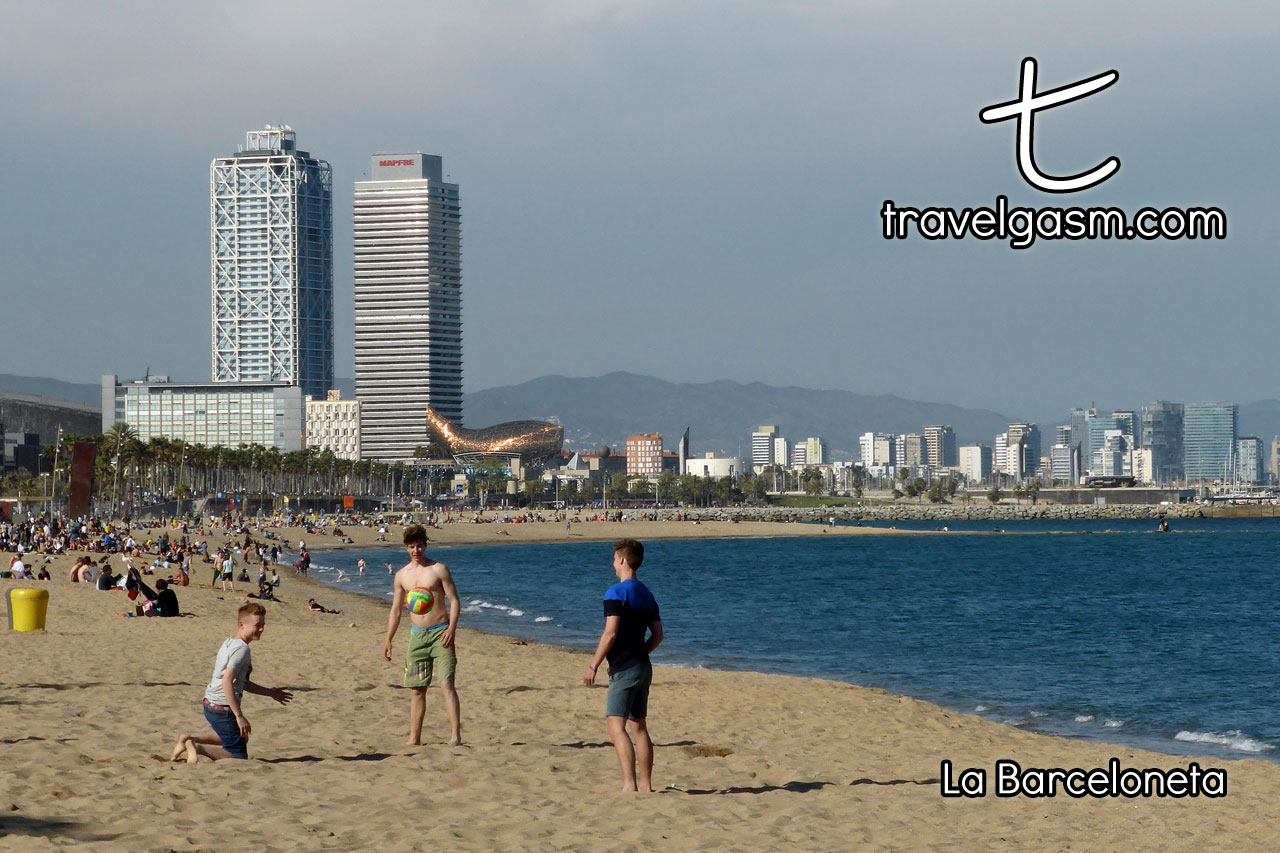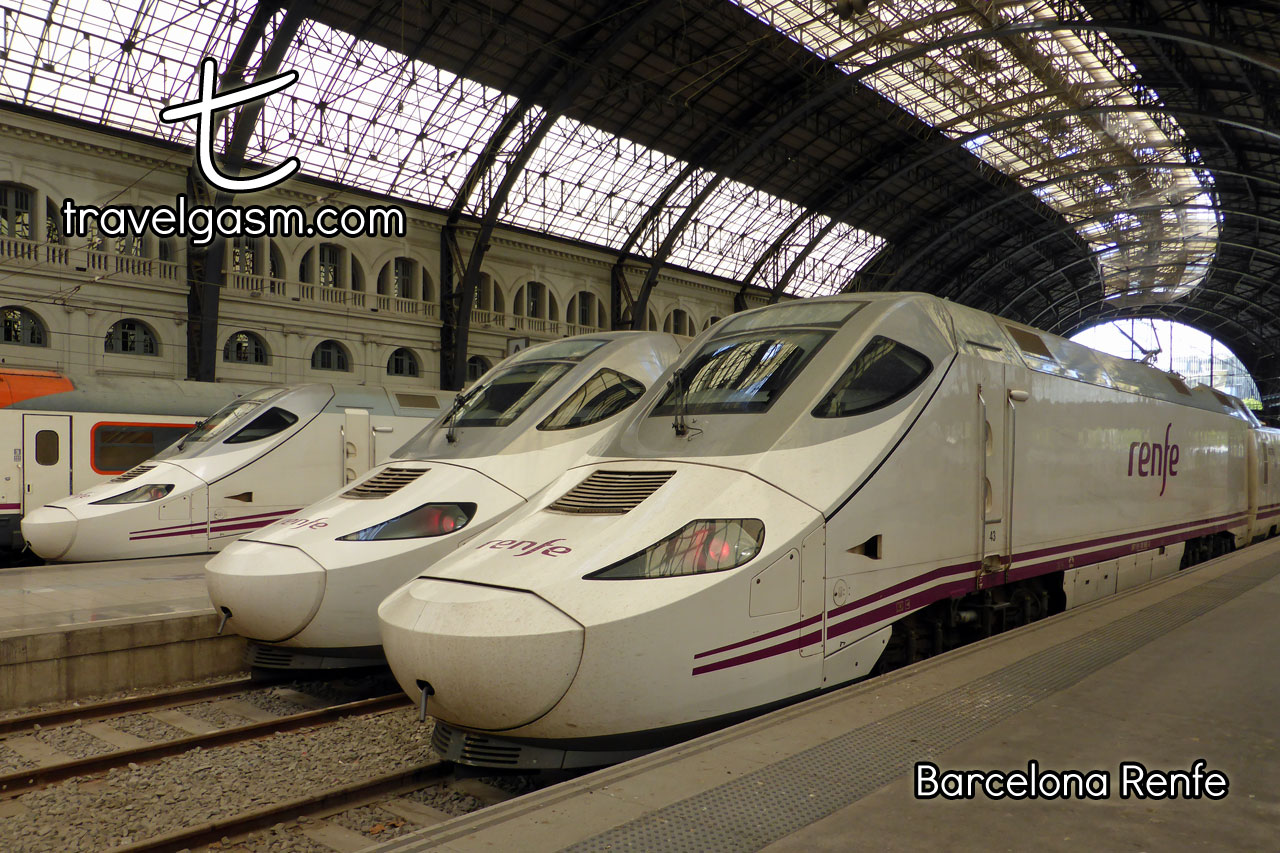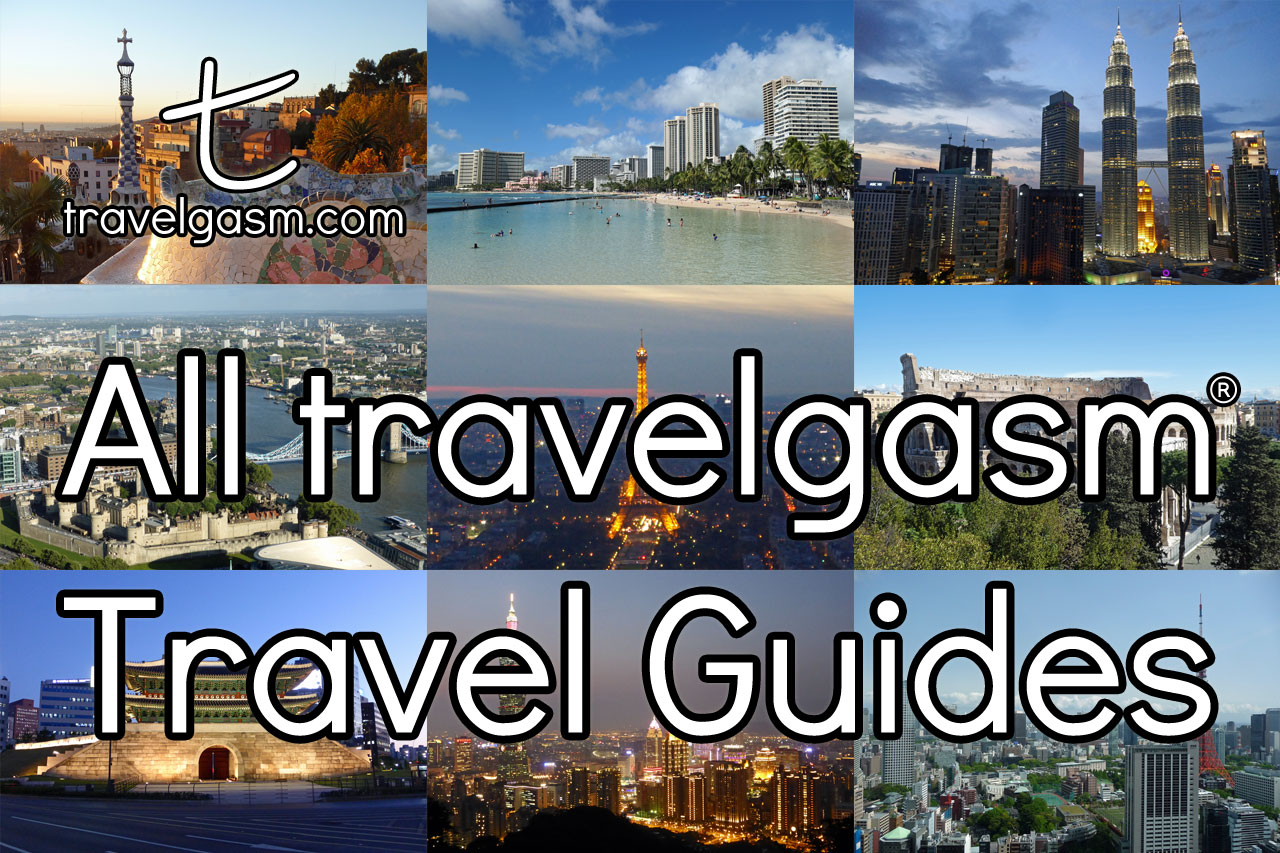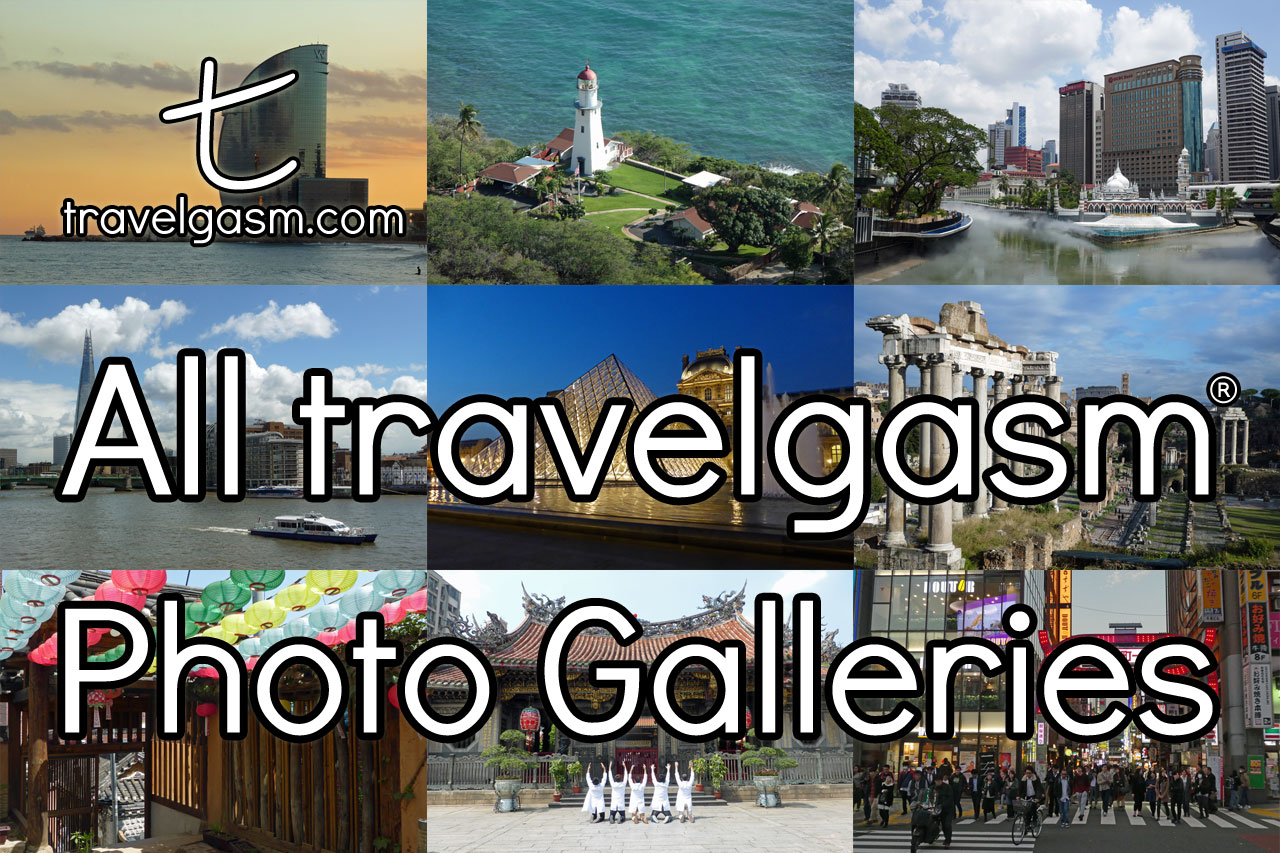Cities > Barcelona > 7 Things Tourists Don't Do in Barcelona, but You Should...
2) Ramble the New Village
Rambla del Poblenou, @22, and Barcelona's First Superblock
2023 Travel Update: As of 2023, Spain essentially is open for tourism by both vaccinated and unvaccinated travelers without Covid-specific documentation or testing. However, be sure to double check the official government site for up-to-the minute details.
Poblenou — "New Village" in Catalan — first was named in 1843 and swallowed by Barcelona's gigantic L'Eixample grid in 1852. Around the same time, it largely was redeveloped from swampy farmland into an industrial area with enormous factories interwoven with workers' tenements. The 1900s were far less productive; decades of environmental degradation, civil war, deindustrialization, and widespread unemployment left the neighborhood in near ruins by the 1970s. Efforts were made to improve portions of the area both in preparation for the Olympic Games in 1992 and with the overlay of the massive @22 Innovation District — approximately 250 city blocks in total — in 2000. In 2022, additional plans for @22 included a higher percentage of housing than originally proposed in 2000 and efforts to further improve the local economy and environment.
These days, Poblenou still is a bit rough-and-tumble with pockets of derelict housing, empty lots, and abandoned factories around and intermingled with shiny, new buildings housing well-paid tech workers. From @22's beginnings, city planners have endeavored to balance the needs of local residents and tech savvy new arrivals, but conflict in such an environment is inevitable.
From a local perspective, Poblenou very much is considered an area of interest to tourists. The Poblenou neighborhood association has been complaining about unruly tourists for more than a decade and fretting that the district will become the "next Barceloneta" to such an extreme that some have labeled it "tourismophobia."
After hyperaggressive marketing by real estate developers to foreigners for at least as long — which is how travelgasm.com first was introduced to the area many years ago — the line between expat, digital nomad, and tourist in Poblenou can be blurry. What is left of the area's character likely will continue to be diluted, but productive spaces are better than abandoned buildings and empty lots, too.
Despite its fear of tourists, Poblenou had yet to reach even the top 50 attractions on the big tourist advisory sites at the time that we first wrote this piece. Although it is nearly encircled by tour bus routes — and plans for late 2023 and 2024 will improve connectivity — the neighborhood is not that visible from the route itself. Tourists who bother to stop at all mostly focus on Bogatell beach on one side and the Torre Glòries (Torre Agbar) skyscraper on the other and often miss the area's historical crown jewel — Rambla del Poblenou — entirely. Accordingly, we think Poblenou is a worthy addition to our 7 Things Tourists Don't Do in Barcelona, but You Should.
Stay Safe around and on Rambla del Poblenou
It is not at all uncommon to meet people who have visited Barcelona for a few days and didn't realize that a rambla is more of a concept than a single destination. Barcelona hosts more than just the Rambla, and Rambla del Poblenou is an easy step toward learning more about the city's structure and ideals.
Chances of trouble on Rambla del Poblenou itself probably are less likely than on its famous cousin — and it definitely is a much better place to chill out or have a meal at local prices — but neither the street nor the neighborhood are as extensively policed by the Mossos, either.
Now is a good time to remind you that travelgasm.com, and the author thereof, are not legally responsible for you in any way in Poblenou or anywhere else and you always should be vigilant about your safety. Pay attention to your surroundings and stick to the main streets with people as much as possible as noted on our map below.
In many visits to the area for meetings, lunches, and dinners, we never have had any trouble walking from the more popular Poblenou Station, but we once were nearly robbed exiting Llacuna Station in the early afternoon. We correctly detected that the three dudes flanking the single metro exit had formed a trap, but they did not react kindly to being spotted — even without comment — and one proceeded to trail us aggressively for half a block hurling abuse and threats. Odds are good these guys were not in the neighborhood to learn Javascript, but rather to steal from techies headed to a nearby office.
The Best Places to Eat in Poblenou
With safety addressed, let's get something to eat! Three of the most famous traditional Catalan options on Rambla del Poblenou include El 58 — which has an excellent, affordable set lunch — Can Recasens — deli by day, upscale restaurant by night — and El Tio Che — well-known for its horchata rice milk and dairy ice cream. We never have tried Can Recasens but have eaten at El 58 more than once and have had plenty of ice cream from El Tio Che. It's hard to top a delicious ice cream and a refreshing tree-lined stroll.
If you would like food that isn't Catalan, we have enjoyed Nice Spice for inexpensive Indian curries — conveniently located next to the Poblenou Metro Station — and Little Fern for coffee and vegan breakfasts inspired by "New Zealand's thriving cafe culture" — on the edge of the neighborhood's people friendly "Superblock" area.
See Barcelona's First Superblock
What is a Superblock? Well, thank you for asking. In architecture circles in North America and Asia alike, a "Superblock" generally is considered a negative term used for oversized street blocks that prioritize cars and that make it difficult or impossible to walk around the area. In Barcelona, on the other hand, Superblocks — Superilles in Catalan — refer to a nine-block, three-by-three section of a street grid — like a tic-tac-toe board — with the interior streets limited entirely to people and bikes or to people, bikes, and low speed vehicles.
Personally, we prefer people-only spaces to these "shared spaces" and Poblenou's Superblock definitely feels like a low budget, temporary implementation (sometimes referred to as a "tactical urbanism" in the city planning game). It has been made a bit more permanent since its initial launch in 2015, but it was the first Superblock that Barcelona implemented as part of a major strategy and it is interesting to see if you are in the neighborhood already. Rambla del Poblenou — a mere block away — and Barcelona's second Superblock — in Sant Antoni — both are much better, though.
Below, we have mapped out what we believe to be the safest route from Poblenou Station — primarily along the well-walked Carrer de Pujades — to the Rambla del Poblenou and the Superblock area as well as the places to eat. Stay safe and have fun!
How to Get Here: Take Line 4 (Yellow) to Poblenou Station and use the only exit (Pujades/Bilbao). After exiting, make a 180-degree turn over your left shoulder, cross Carrer de Bilbao and walk along Carrer de Pujades to begin our suggested walk. Based on our experience, return to Poblenou Station to leave instead of the closer Llacuna Station. The area around Llacuna is not well walked and thieves can be a problem in and around the station.
travelgasm.com's Rambla del Poblenou & @22 Map (Full Screen)
Cities > Barcelona > Barcelona Overlooked 7 > Next: (3) March Mistral... >>
Like Rambla del Poblenou, @22, or the Barcelona Superblock concept? Tell your friends and frenemies on social media that you discovered them first:
Be sure to see our Top 7 Things to Do in Barcelona, too.
Intelligent and good-looking readers of travelgasm.com like you also sign up for our free monthly-ish mailing list.
Live in Barcelona? What's your favorite "local" thing to do? Spotted anything out-of-date or inaccurately translated? Please tell travelgasm.com. Gràcies! Thanks!




